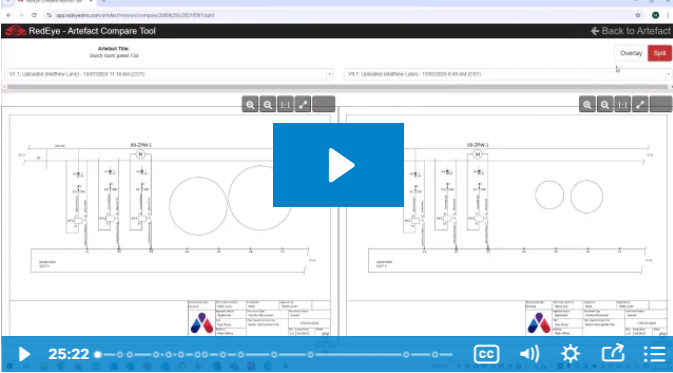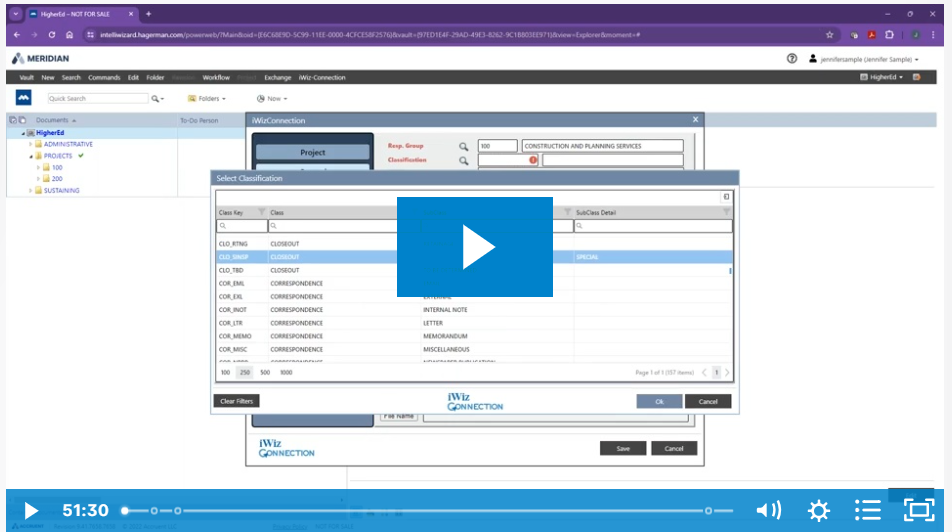Efficient document management is a critical component for facility management in higher education. Sprawling campuses and complex infrastructures mean a need for a streamlined, digital solution.
When institutions face the challenges of growing operational costs combined with shrinking budgets, a facilities document management system is not often seen as a priority. But this can do more harm than good, because modern organization means faster decision-making processes. And when McKinsey research shows that leaders spend nearly 40% of their time making decisions and that this time is poorly used, ensuring that the process is smooth can be a game-changer.
Implementing a document management tool like Meridian® to create an efficient document management system can transform the overall capabilities of facility management. They ensure accurate and complete document access, simplify compliance, and offer better information control.
The world will continue to digitize. Higher education organizations must prepare for the future to remain useful and accessible to facilities management groups.
“Our mission is to be the most high-performing, innovative, leading-edge facilities organization in the nation. Meridian helps us achieve this mission by providing a powerful tool for managing our day-to-day operational functions and accessing historical data. As we continue to grow, Meridian will remain an integral part of our strategic planning.”
- Lorena Griffin, (Former) Facilities Information Services Manager, Michigan State University
Common Challenges with Uncoordinated Document Management
Higher education facility management faces a number of operational hurdles. The lack of a centralized system leads to a blend of inefficiencies and increased risks. Some of the most common problems include:
- Difficult in Locating Documents: Documents across multiple platforms is as challenging as it is time-consuming.
- Data Inconsistency: Conflicting information can lead to errors.
- Version Control Issues: Difficulty in tracking changes, resulting in costly errors due to outdated documents.
- Risk of Losing Data: Without proper backups and safeguards, there’s a serious risk of losing important documents.
- Poor Decision-Making: A lack of critical information means a hindered ability to make informed decisions.
- Compliance Risk: Poor document handling can lead to violations of regulatory standards.
- General Disorganization: Misplaced or improperly categorized documents leads to confusion and delays.
Recognizing these obstacles is the first step to finding higher ed solutions.
Strategy #1: Centralize Document Access and Metadata Linking
A primary obstacle in higher education facility management is the fact that there are numerous documents spread across various digital and physical locations.
A facilities document management system (like Meridian) addresses this challenge by creating a centralized repository for all documents. This hub is where everything from blueprints to maintenance records is accessible in a few clicks. The power of Meridian lies in its ability to link documents with relevant metadata, turning a simple search into a very effective and precise retrieval of information.
Facilities can leverage Meridian to streamline access, ensuring that all users find what they need with ease. The centralization not only boosts efficiency but also enhances the accuracy of data. Those are two crucial factors in facility management.
Take these actionable steps to centralize document access and metadata linking:
- Implement a Unified Document Repository: Transition all physical and digital documents to Meridian’s centralized system. This includes scanning physical documents and ensuring all digital files are uploaded and indexed within Meridian.
- Develop Comprehensive Metadata Protocols: Establish a detailed metadata framework for each document type. This means defining and standardizing metadata fields like date, document type, associated project or facility, and other relevant details to streamline searches and data access.
- Train Staff on Efficient Search Practices: Conduct training sessions for facility management staff, focusing on effectively using Meridian’s document management search functionalities. Emphasize leveraging metadata for precise information retrieval. This ensures quick and accurate access to necessary documents.
Strategy #2: Customize Meridian for Specific Institutional Needs
Meridian’s flexibility is one of its greatest strengths. Each higher institution can tailor it to their specific requirements. The key component of this customization is IntelliWizards, which enables even more precise metadata configuration.
Adaptability is crucial for situations in which a single document pertains to multiple buildings or pieces of equipment. By configuring Meridian to align with an institution’s specific document management processes, facility managers ensure that the system optimally supports their workflows.
The focused configuration naturally leads to a more intuitive document management experience for all parties involved.
These actionable steps can help you customize any facilities document management system for your specific needs:
- Utilize IntelliWizards for Tailored Metadata Configuration: Customize metadata fields specific to your institution’s needs, such as different campus buildings, equipment types, or project categories.
- Conduct a System Configuration Workshop: Provide a learning opportunity for individuals and map out the institution’s specific document management processes. Then, use the session to configure Meridan’s settings and features.
- Set Up Multi-Value Property Fields: This feature improves the flexibility of the system, and ensures that documents can be easily located and utilized across various operational areas.
Strategy #3: Integrate Existing Facilities Systems with Meridian
An integration of Meridian with existing systems is a vital key to unlocking its full potential. This integration eliminates data silos and allows facility managers to have a unified view of documents relating to buildings, assets, and ongoing projects.
Integrating Meridian with existing building and asset management systems means information flows smoothly. That improves efficiency and fosters quicker decision-making. It’s a holistic approach to document management that saves time and reduces the risk of data inconsistency.
Use these actionable steps to integrate Meridian with your existing facilities document management system:
- Evaluate and Identify Integration Points: Analyze existing systems such as building management, asset tracking, and project management tools.
- Implement Data Synchronization Mechanisms: These tools ensure that all systems reflect the most current information.
- Regularly Review and Optimize Integration Process: Schedule periodic reviews of the setup to make sure it continues to meet the evolving needs.
Avoid Common Challenges with Modern University Document Management
The Hagerman approach to higher education facility efficiency means access to innovative and cost-effective solutions. This is vital, as efficiency continues to be one of the most valued concepts in business. 90% of enterprises are looking for automation tools to simplify their processes!
Our Meridian experts can help you respond and lead this trend. In addition to providing a best-in-class facilities document management system, we help our clients avoid costly rework or downtime, enhance efficiencies, and more.
Curious how we do it? Learn more about the Hagerman advantage.




Comments